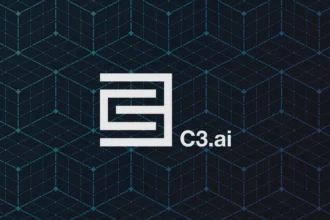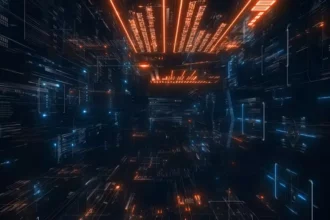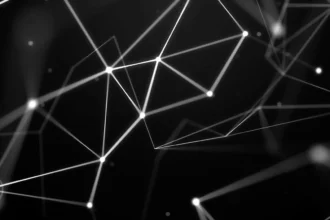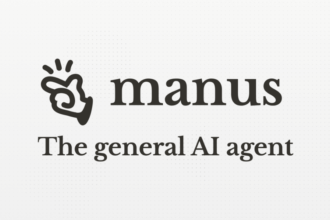Table of Contents
ToggleThe Wiretap: Trump Says Goodbye To The AI Safety Institute
The Trump administration is reorganizing the U.S. AI Safety Institute (AISI) into a new entity called the Center for AI Standards and Innovation (CAISI), shifting focus to favor innovation over regulation.
Background of the AI Safety Institute Reorganization
The AI Safety Institute (AISI) was established in 2023 by the Biden administration within the National Institute of Standards & Technology (NIST). It focused on researching risks associated with widely used AI systems such as OpenAI’s ChatGPT and Anthropic’s Claude. The reorganization into CAISI under the Trump administration marks a notable change in U.S. AI policy.
The dismantling of AISI had been anticipated for some time. In February, JD Vance’s delegation to a major AI summit in France omitted any representatives from the AI Safety Institute. Elizabeth Kelly, AISI’s inaugural director, stepped down earlier that month, signaling an impending transition.
Shift from Regulation to Innovation
The Commerce Department’s announcement emphasized fostering innovation rather than imposing regulatory constraints. Secretary of Commerce Howard Lutnick criticized previous use of “censorship and regulations” under the pretext of national security, stating that innovators will no longer be hindered by such standards.
CAISI will focus on enhancing U.S. innovation in commercial AI systems, while still aligning with national security requirements. Yet, Lutnick’s statements reflect a paradox: the need for national security standards remains but should not stifle innovation.
Functions of CAISI Compared to AISI
- CAISI will continue to operate within NIST.
- It will assist industry in developing voluntary AI standards, similar to AISI’s role.
- CAISI will lead unclassified evaluations of AI capabilities that pose potential national security risks.
- The center aims to maintain U.S. dominance in international AI standards.
Despite apparent changes, many functions of CAISI resemble those of its predecessor, leaving the precise scope and impact ambiguous.
Uncertainties Surrounding Ongoing AI Safety Projects
The restructuring raises questions about existing research collaborations. Earlier this year, a coalition of companies and academic groups, including OpenAI and Anthropic, urged Congress to formally codify the AI Safety Institute’s status. Both firms had active agreements with AISI on AI safety projects. As of now, the future of these partnerships remains unclear, with no official statements from the Commerce Department or NIST addressing ongoing work.
Key Takeaways
- The Trump administration replaces the AI Safety Institute with the Center for AI Standards and Innovation.
- CAISI emphasizes innovation, reducing regulatory constraints but maintaining national security focus.
- Many functions of CAISI mirror those of AISI, but the full extent of differences remains uncertain.
- Ongoing AI safety research projects involving major AI companies face an unclear future.
- CAISI aims to ensure continued U.S. leadership in international AI standards.
The Wiretap: Trump Says Goodbye To The AI Safety Institute
What happens when an administration decides to bid farewell to an AI safety body and usher in a new era of innovation over regulation? The Trump administration is doing exactly that, reworking the U.S. AI Safety Institute (AISI) into the Center for AI Standards and Innovation (CAISI). And no, this isn’t just a name change—it’s a strategic pivot loaded with intrigue and uncertainty.
Here’s the full scoop on this reshuffle and what it means for America’s AI future.
First, some background. The AI Safety Institute (AISI) was launched by the Biden administration in 2023. Its home? The National Institute of Standards & Technology (NIST). The institute was dedicated to researching risks associated with popular AI technologies like OpenAI’s ChatGPT and Anthropic’s Claude. Think of them as the safety inspectors of the AI world, double-checking that innovation didn’t run wild without guardrails.
But now, the Trump administration is reorganizing this body into the Center for AI Standards and Innovation (CAISI). They’re shaking things up, and the goal seems to be simple: supercharge innovation by cutting through regulatory red tape.
A Long Time Coming: The Signs Were There
This dismantling wasn’t out of the blue. Back in February, when Senator JD Vance headed to a major AI summit in France, none of his delegation included representatives from the AI Safety Institute. That was a subtle but telling sign. Even the agency’s first director, Elizabeth Kelly, stepped down earlier the same month. Clearly, something was brewing behind the scenes.
One might ask: Why kick the safety net away?
Innovation vs. Regulation: A Delicate Tug of War
The Department of Commerce’s announcement gives a nod to the tension. Secretary of Commerce Howard Lutnick explains it like this: “For far too long, censorship and regulations have been used under the guise of national security. Innovators will no longer be limited by these standards.”
It’s a bold stance. Essentially, the new CAISI is supposed to champion American AI innovation while maintaining security standards.
The tricky part? Lutnick’s wording is a riddle. On one hand, national security standards have limited innovation—on the other, America needs those same standards to keep secure. It’s a paradox wrapped inside an enigma, much like some AI algorithms themselves.
So, What’s New Under CAISI?
Here’s the twist: The core mandate looks surprisingly familiar. CAISI will continue to develop voluntary AI standards and lead evaluations of AI risks threatening national security. It remains a part of NIST, just like AISI did.
- Both will examine unclassified AI capabilities to assess risks
- Both aim to collaborate with industry and external experts
- Both have national security as a priority
So, if the new body closely mirrors the old one, what exactly changes? The emphasis on innovation over regulation is clearer than before. It’s a shift from a cautious approach to a *faster* and more flexible one. Are the safety checks softer? Potentially.
Keeping America’s Edge: International Standards Matter
Despite some skepticism about standards, CAISI has a mission to maintain U.S. dominance in international AI standards. This means the U.S wants to lead the global conversation on how AI should behave. Given the geopolitical race in AI, this ambition is crucial.
Imagine international AI standards as the rules of the AI road. Without clear signposts, emerging AI technologies might speed ahead recklessly or slam on the brakes too often. CAISI aims to make sure the U.S. writes the road signs, not just follows them.
What About Ongoing Research? A Cloud of Uncertainty
Here’s where it gets murky. Many companies and researchers had partnered with AISI. Notable players like OpenAI and Anthropic had projects tied to the institute. Earlier this year, a coalition actually urged Congress to cement AISI’s role before the year ended.
Now, with the shift to CAISI, the future of those research projects hangs in the balance. The Commerce Department and NIST have stayed silent amidst questions, leaving stakeholders curious, concerned, or even frustrated.
What Does This Mean For The Future?
Does this signal a retreat from AI oversight? Not exactly. The name’s changed, and the approach is evolving. CAISI still tackles AI risks and balances that with boosting innovation. But the tone is different—a bit more “let’s innovate boldly” and a bit less “proceed with caution.”
This evolution reflects a broader debate in AI circles. How do we protect society without choking progress? Too much regulation might slow breakthroughs; too little might invite chaos.
Questions to Ponder
- Can CAISI truly balance robust AI safety with a streamlined innovation pace?
- Will voluntary standards be enough to prevent risky AI developments?
- How will the U.S. maintain international authority in AI when the global race heats up?
- What happens if research projects with big AI firms are paused or dropped?
Final Thoughts
Trump’s “goodbye” to the AI Safety Institute isn’t a simple farewell—it’s a complex transformation. The U.S. is doubling down on innovation while keeping a watchful eye on security risks. But the fog of uncertainty around research continuity and the exact scope of CAISI’s powers remains thick.
Innovation is essential, but so is caution. As CAISI takes the stage, anxiously watching eyes from industry, academia, and government await its moves. Will this new chapter in AI safety usher in a golden age for American AI, or is it a gamble with national security at the stakes? Time and actions will reveal.
In the meantime, keep your finger on the pulse—and maybe keep ChatGPT handy for real-time updates. After all, AI safety never sleeps.
What is the main change from the AI Safety Institute (AISI) to the Center for AI Standards and Innovation (CAISI)?
The AISI is being reorganized into CAISI. While both are part of NIST and focus on AI risks, CAISI aims to prioritize innovation over regulation. It will assist with voluntary AI standards and continue evaluating national security risks in AI.
Why was the AI Safety Institute dismantled under the Trump administration?
The move was expected for some time. Officials want to reduce what they see as restrictive regulations and censorship. The focus is shifting toward encouraging innovation while still maintaining national security standards.
Will CAISI continue the research projects and collaborations that AISI had with companies like OpenAI and Anthropic?
It’s unclear what will happen to these projects. The Commerce Department and NIST have not commented, leaving the status of ongoing research uncertain.
How does CAISI plan to balance innovation with national security concerns?
CAISI aims to foster AI innovation while ensuring AI systems meet national security standards. It will conduct unclassified evaluations of AI capabilities that might pose risks but seeks to avoid overly restrictive regulations.
What role will CAISI have in international AI standards?
CAISI is tasked with ensuring the U.S. maintains dominance in setting international AI standards. This indicates a continued focus on influencing global AI development frameworks.





